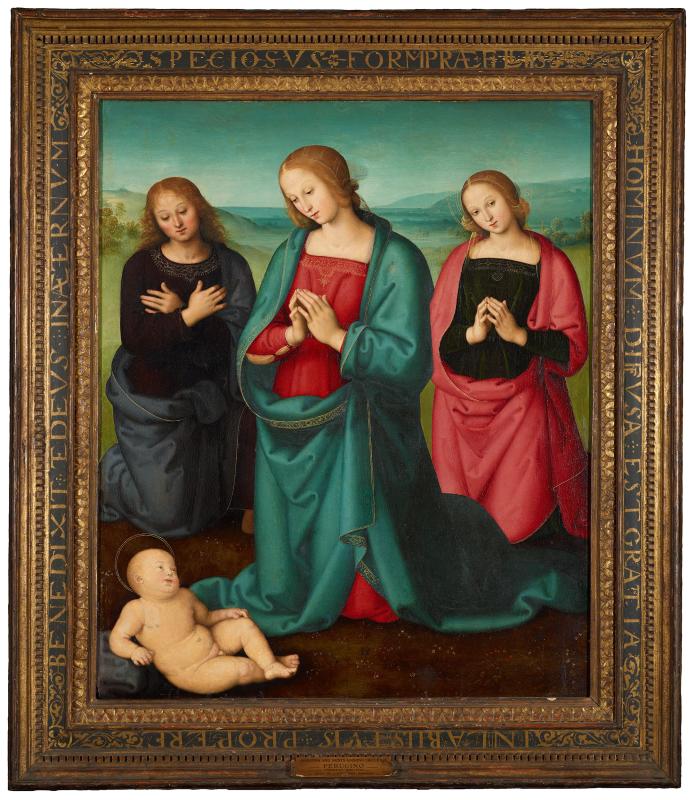
Virgin and Saints Adoring the Christ Child
Said to have been the property of a nun in Perugia, who sold it to a foreigner; Duke of Orleans, Paris; bought in Paris ca. 1830 by a member of the Sitwell family; by descent to Sir George R. Sitwell, Renishaw Hall, Chesterfield, Yorkshire, England; purchased by R. Langton Douglas, London, on behalf of J. Pierpont Morgan, 1911; by descent to J.P. Morgan, Jr.
Inscribed on frame, "Specious forma prae filiis hominum; diffusa est gratia in labiis tuis; proptera benedixit te Deus in aeternum" (Psalm 44, 45: 3) [translation: "Thou are fairer than the Children of men; grace is poured into thy lips; therefore God hath blessed thee forever".] The frame is later but it evokes the sentiments intended by the painting. Inscribed in halo of saint at left, "SA[NCTUS]"; on halo of saint at right, "SA[NCTA]...A (?) PRO N"; inscribed in halo of saint at left, "SA[NCTUS]"; on halo of saint at right, "SA[NCTA]...A (?) PRO N".
The painting depicts the Virgin adoring the Christ child flanked by two saints. The male saint to the left is probably St. John the Evangelist. The female saint to the right has not been convincingly identified. She is generally thought to be the Magdalene, but also has been identified as St. Sophronia based on a reading of the partial inscription on her halo. It has recently been suggested by William Voelkle that this inscription is not a name, but the phrase "Ora pro nobis".
Known for his graceful figures, Perugino was the leading painter from Umbria, a region in Central Italy during the late 15th and early 16th centuries. Using harmonious jewel-like tones the artist depicted the virgin flanked by St. John the Evangelist, and an unidentified female saint, perhaps Mary Magdalene. The inscription on the frame referring to the Christ child is from Psalm 45, fairer in beauty are you than the sons of men. Grace is poured out upon thy lips. Thus God has blessed you forever.
When Morgan was furnishing his study, he pursued Italian paintings in earnest. This canvas was procured for Morgan in 1911 by the Scottish agent Robert Langton Douglas from the Sitwell family, whose members are noted for their eccentric collections housed in Renishaw Hall in Derbyshire, England.
